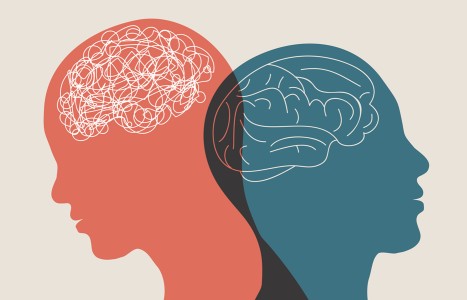Consequences for HIPAA violations can often be quite harsh. If someone has breached the HIPAA privacy regulations – even without any malicious intent, civil penalties are applicable: $100 per violation for unawareness, a minimum of $1,000 for reasonable cause, a minimum of $10,000 if willful neglect is present and then rectified, and finally, a minimum of $50,000 for individuals who act with willful neglect and ignore the issue.
| Digital ExclusiveSpotlight on the AAOM
Gene Bruno has had a profound influence on the practice of acupuncture and Oriental medicine in the United States. In the mid-1970s, he helped found two successful acupuncture institutions, and was one of the leaders in a project that introduced veterinary acupuncture to the U.S. He also helped write the scope of practice laws for acupuncture and Oriental medicine in Washington and Oregon. Since 2002, he has served as president of the American Association of Oriental Medicine (AAOM), and has played an integral role in that organization's recent successes.
In part two of our interview, Dr. Bruno discusses the AAOM's efforts to assist the acupuncture profession, and discusses issues such as new licensing laws, the FDA's ban on ephedra, the Visioning Search Task Force, and other relevant topics.
Acupuncture Today (AT): How are the AAOM and the other acupuncture organizations working together to help keep the profession moving forward?
Gene Bruno (GB): One of the more significant changes in the last few years is that many AOM organizations are actually communicating more closely than ever before, and in most cases working very well together. The AAOM and the AOM Alliance just recently completed an ethics statement for our profession. This covered more than two years of cooperation and hard work. The Visioning Task Force is another example of this cooperation. The AAOM is working closely with ACAOM by participating in its Doctoral Task Force. The AAOM also communicates regularly with FAOMRA and supports its efforts to involve more regulatory agencies in their work.
The AAOM has close communications with most state associations, and we are often able to assist them in their efforts. Our House of Delegates is made up of AAOM member state associations. Through our House of Delegates, we provide means for regional and state interests to have a direct influence and voice on national issues.
AT: One of the biggest issues facing the profession concerns other health care providers and their ability to practice acupuncture. Currently, about three dozen states allow chiropractors to practice acupuncture, and the training they receive is often far less than what is required for a LAc to practice. What is the AAOM doing to stop, or at least slow down, the practice of acupuncture by chiropractors and other health care providers?
GB: As I mentioned earlier, the attempt by members of other professions to acquire the right to practice acupuncture with minimal, inadequate training has increased dramatically. It is not "often far less" training: it is always less training. And, as you say, it is a major concern. Since the mission of the AAOM is to preserve and protect the integrity of acupuncture and Oriental medicine, it is a full-time job working with the various states where this is taking place and where chiropractors are trying to get new privileges with insufficient training. In this capacity, we work with state associations to educate legislators and licensing boards about the accepted standards of education necessary to practice in order to protect the public trust.
The fact that chiropractors are allowed in some states to practice acupuncture with entirely inadequate training, according to the accepted standards of the profession in the U.S. and the standards of the World Health Organization, should alarm all qualified acupuncturists. This will lead to an increase in public endangerment and erosion of the public trust.
AT: Another big issue remains getting acupuncture licensing laws in all 50 states. What are the prospects of that happening in the near future, and what is the AAOM doing to see that these types of laws get passed?
GB: We expect the last few states to be the most difficult. We hope to have a new law in Michigan soon, and are using our connections and resources to get laws passed in every state that does not yet have a law. The AAOM provides model bills for state associations in their efforts to pass licensing laws, and we provide model bylaws for use by the state associations themselves. We are very supportive of state organizations' individual desires when working with them.
Additionally, some existing state practice laws often come under challenge. This happened last year in Arkansas. The AAOM took the lead in stopping an attempt to literally gut the standards for licensure in Arkansas. A law was stopped that would have reduced the requirements to 142 total hours of training, which would have completely destroyed the level of competence in the state, and ultimately have a negative impact on national standards.
AT: In April, the FDA's ban on ephedra went into effect. Do you think the FDA will start removing other herbs and supplements from the market, and if that happens, what effect will it have on the practice of Oriental medicine in the U.S.?
GB: It seems the FDA will continue to remove other herbs unless the work the AAOM and other organizations are doing can lead to a satisfactory agreement that will allow us continued use and access. It is important to understand that the FDA has always considered herbs as drugs, but they have historically avoided pursuing a reclassification of herbs. Although there is a posting on the FDA Web site that states the new ruling on ephedrine alkaloids does not apply to Asian herbal formulas, this language is not included in the rule itself. Because this language is not in the rule, it implies that the labeling of herbal formulas should not list them as supplements.
The effect of this is already apparent in the problems that suppliers are having with importation of herbs. The AAOM and the AHPA have been working together and meeting with the FDA to obtain more clarification so that practitioners will still have access to herbs and so that suppliers will be able to provide that access. But this process will be a lengthy one and will take time.
AT: The Visioning Search Task Force (of which AAOM is a member) is working on a vision process to help shape the profession for the next 10 to 20 years. What role does the AAOM play as a part of the VSTF? Where do you see the profession 10 years from now? Twenty years from now?
GB: The AAOM supports the VSTF in the development of a "Future Search" process. In this regard, we provide leadership, personnel and meeting space in order for the potential common vision that exists within this community to be realized.
It is not the job of the AAOM or any other single agency to determine the future vision of Chinese medicine in America. We are here to serve the vision that is emerging from the key stakeholders within the field. That said, it has been mutually agreed that within 15 years, practitioners will enter the field with doctoral degrees, that there is parity with other professions with regard to reimbursement, and that the profession successfully maintains the treasure house of knowledge that we call Oriental medicine.
AT: There are roughly 4,000 students currently enrolled at acupuncture schools in the U.S. Many of them will have just graduated by the time this interview is published. If you could give these students and new graduates any advice about the profession, what would you tell them?
GB: Join your state association and the AAOM, and support their work. Your state and national associations are a major part of why you have this opportunity to practice the medicine you have worked so hard to master. By contributing to your state and national associations, your ideas, contributions and leadership will help shape the future of your profession.
AT: Any other final comments you'd like to add?
GB: I would like to thank Acupuncture Today for allowing me to address the concerns of our profession in this forum.
AT: Thank you.


